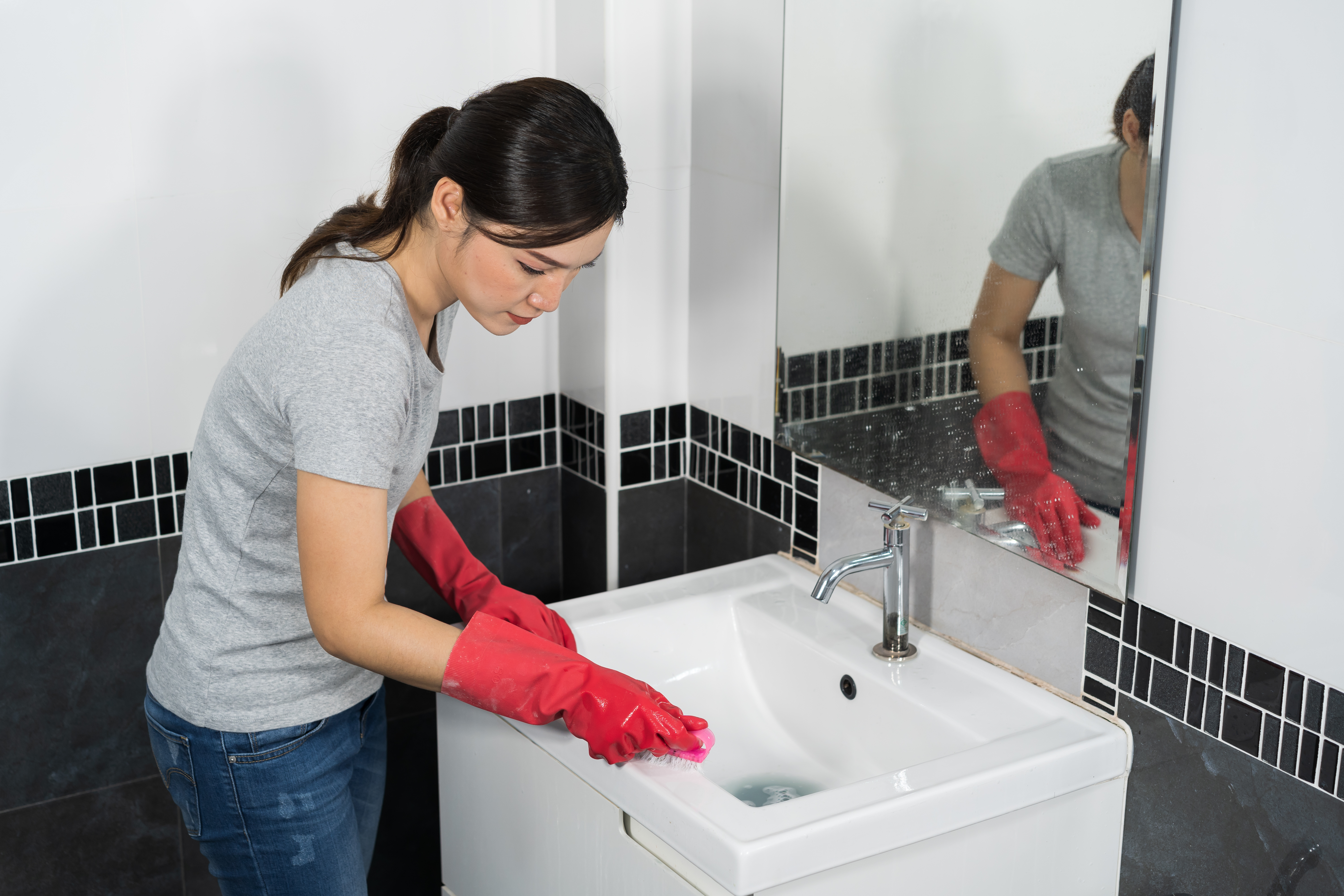How To Clean Sink To Look Like New
A sink is more than just a functional fixture; its smooth surface and polished charm, often finished with porcelain enamel over cast iron, make it a timeless element in many homes.
Despite its durability, a sink can gradually lose its luster. Stains, soap residue, hard water deposits, and bacterial buildup can accumulate, diminishing its shine and making the entire bathroom feel less fresh and inviting.
Fortunately, with a little effort and the right approach, and with an effective Bathroom Cleaner, you can restore the sink’s bright, like-new look. In this guide, we’ll walk you through how to clean sink effectively and keep it looking pristine for years to come.
Supplies you’ll need
Before you begin cleaning your sink, it’s important to gather all the necessary supplies to ensure a smooth and effective cleaning process. Here’s what you’ll need:
- Toothbrush
- Soft-bristle brush
- Microfiber towel
- Dettol Healthy Bathroom Power Cleaner Trigger Spray
How to clean a sink
- Before cleaning the sink, remove all bathroom amenities. This will help ensure easy, unobstructed access and ample space for a thorough cleanup.
- After that, rinse the entire surface with warm water to loosen up grime and residue. This helps prepare the sink for deeper cleaning by softening any hardened spots, making them easier to scrub away in the following steps. Don’t forget to check and rinse around the drain and faucet area as well.
- Spray a generous amount of Dettol Healthy Bathroom Power Cleaner Trigger Spray all over the sink surface, including the faucets, sink basin, and drain.
- Let the cleaner sit for 5–10 minutes to break down dirt, dust, debris, soap scum, tough stains, and kill 99.9% of germs and bacteria.
- Using a soft-bristle brush, begin scrubbing the sink in circular motions. For tough stains, reapply the cleaning spray directly onto the brush and gently scrub the problem areas.
- Use an old toothbrush to clean tight corners, around the faucet base, and the drain area. Avoid steel wool or abrasive scrubbers, as they can scratch and dull the sink’s finish over time.
- Before you start cleaning, declutter the sink area by removing all bathroom amenities. This will ensure easy, unobstructed access and ample space for a thorough cleanup.
- Once you’ve scrubbed the entire sink, rinse away the cleaner and loosened grime using warm water. Be thorough to ensure no residue remains, especially around the drain and edges.
- Use a clean, dry microfiber cloth or towel to wipe down the sink. This prevents water spots and restores the enamel’s shine. Buffing the surface also helps you notice any areas that might need a second pass.
FAQs
How often should I clean my sink?
You should clean your sink at least once a week, but wipe it down daily with Dettol Original Anti-Bacterial Multi Use Wipes to prevent stains, buildup, and dullness.
Can I use bleach to clean my sink?
While bleach is considered effective for cleaning and disinfecting, it is generally not recommended for sinks, as it can erode the finish over time and cause discoloration.
Why is my sink turning yellow?
Yellow staining on a sink can occur due to hard water, soap scum buildup, or the use of harsh chemicals.
